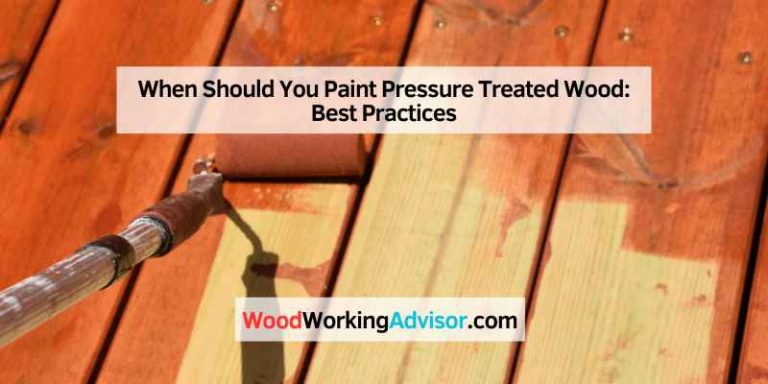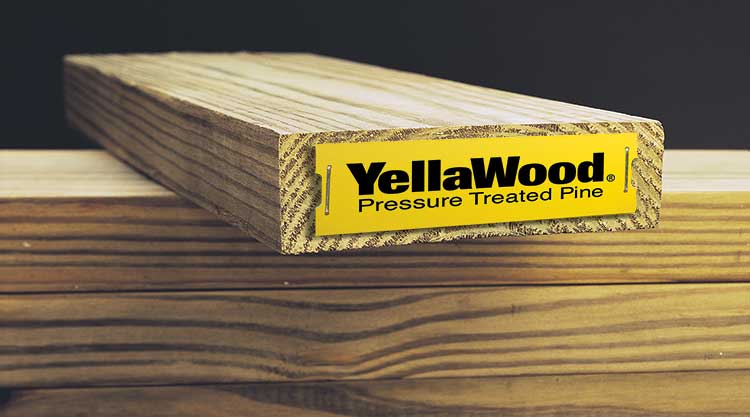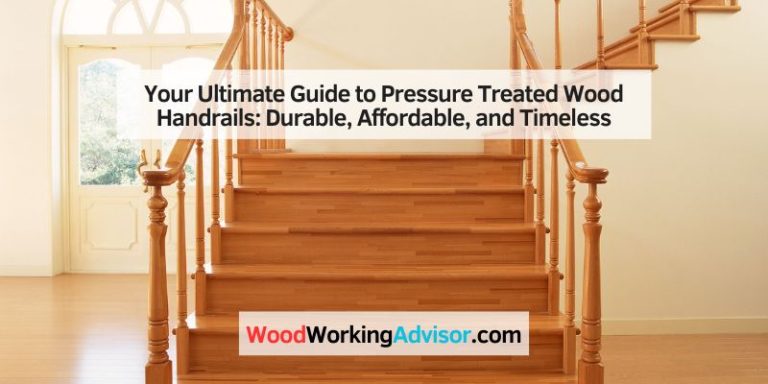How Long Does Pressure Treated Wood Last? Deck Lifespan Guide
Pressure treated wood on a deck can last anywhere from 20 to 30 years, depending on various factors such as maintenance, climate, and exposure to elements. This type of wood is treated with chemicals to resist rot, insects, and decay, increasing its longevity compared to untreated wood.
However, regular maintenance, such as sealing or staining, is necessary to prolong its lifespan and ensure its durability. Taking proper care of your pressure treated wood deck can significantly extend its lifespan and keep it in good condition for many years to come.
Introduction To Pressure Treated Wood
Pressure treated wood on a deck can last up to 20 years with proper maintenance. Factors like climate and upkeep play a role in determining the lifespan. Regular sealing and inspections help extend the longevity of pressure treated wood decks.
Pressure treated wood is a popular choice for outdoor construction projects like decks due to its durability against rot and insects.
Chemicals are forced into the wood under pressure to protect it from decay, making it last longer than untreated wood.
Benefits For Deck Construction
- Enhanced durability against rot and insects
- Extended lifespan compared to untreated wood
- Cost-effective option for long-term deck investment
Common Types And Their Durability
| Wood Type | Durability |
|---|---|
| Pine | 10-15 years |
| Cedar | 15-20 years |
| Spruce | 5-10 years |
Factors Affecting Wood Longevity
Pressure treated wood longevity on a deck depends on factors like climate, maintenance, and wood quality. In general, pressure treated wood can last 15-20 years with proper care and maintenance. Regular sealing and staining can significantly extend the lifespan of the wood, protecting it from moisture and UV damage.
When it comes to building a deck, pressure-treated wood is a popular choice due to its resistance to decay and insects. However, the question remains: how long does pressure-treated wood last on a deck? The answer depends on several factors that can affect the longevity of the wood.
Environmental Impact
The environment can have a significant impact on the lifespan of pressure-treated wood. Exposure to moisture, sunlight, and extreme temperatures can cause the wood to deteriorate more quickly. For example, a deck in a humid and rainy climate may need to be replaced sooner than a deck in a drier climate. To extend the life of your deck, it’s important to regularly clean and maintain it, as well as protect it from direct sunlight and moisture.
Quality Of Installation
The quality of installation can also play a role in how long pressure-treated wood lasts on a deck. If the wood is not properly installed and sealed, moisture can seep into the boards and cause them to rot. Additionally, using the wrong type of fasteners or not spacing the boards correctly can cause the wood to warp and split over time. To ensure the longest possible lifespan for your deck, it’s important to hire a professional contractor who has experience with pressure-treated wood installation.
In conclusion, the longevity of pressure-treated wood on a deck depends on several factors, including the environment and the quality of installation. By taking the necessary steps to protect and maintain your deck, you can ensure that it lasts for many years to come.
Deck Lifespan Expectations
Pressure treated wood on a deck can last around 15-20 years with proper maintenance and care. However, factors like climate and maintenance routines can influence the lifespan. Regular cleaning, sealing, and inspections can help prolong the deck’s longevity.
Average Lifespan Of Pressure Treated Decks
If you’re planning to build a deck, it’s important to understand the lifespan expectations of pressure-treated wood. Pressure-treated wood is chemically treated to resist rot, decay, and insect damage, making it a popular choice for decks. On average, pressure-treated decks can last 20-30 years with proper maintenance and care.
However, there are several factors that can impact the lifespan of pressure-treated wood, including:
- Climate and weather conditions
- Exposure to sunlight
- Frequent foot traffic
- Use of sealants and stains
- Quality of the wood
Comparisons With Other Materials
While pressure-treated wood is a popular choice for decks, there are other materials that can offer longer lifespans. Here are some comparisons to consider:
| Material | Average Lifespan |
|---|---|
| Composite | 25-30 years |
| Cedar | 20-25 years |
| Redwood | 25-30 years |
| Aluminum | 40-60 years |
| Steel | 30-50 years |
It’s important to note that while some of these materials may offer longer lifespans, they often come with a higher price tag. It’s important to weigh the cost and benefits of each material before making a decision.
In conclusion, pressure-treated wood can last 20-30 years with proper care and maintenance. However, there are other materials that may offer longer lifespans. When choosing a material for your deck, it’s important to consider factors such as climate, foot traffic, and cost.
Maintenance For Extended Durability
Pressure treated wood is a popular choice for decking due to its resistance to rot, insects, and decay. However, even with these natural advantages, proper maintenance is essential to ensure its longevity. By following routine cleaning tips and sealing and staining intervals, you can extend the lifespan of your pressure treated wood deck.
Routine Cleaning Tips
Regular cleaning is key to maintaining the durability of your pressure treated wood deck. Here are some tips to keep in mind:
- Sweep the deck regularly to remove debris and leaves.
- Use a mild detergent mixed with water to wash away dirt and stains.
- Avoid using harsh chemicals or power washers, as they can damage the wood.
- Inspect the deck for any signs of mold or mildew and address them promptly.
Sealing And Staining Intervals
Sealing and staining your pressure treated wood deck is crucial to protect it from moisture and UV damage. Here’s a guideline for sealing and staining intervals:
| Sealing | Staining |
|---|---|
| Every 1-2 years | Every 2-3 years |
Remember to clean the deck thoroughly before applying any sealant or stain. This will ensure better adhesion and longevity of the protective coating.
By following these maintenance practices, you can significantly extend the lifespan of your pressure treated wood deck. Regular cleaning and proper sealing and staining intervals will help keep your deck looking great and protect it from the elements for years to come.
Signs Of Wear And Damage
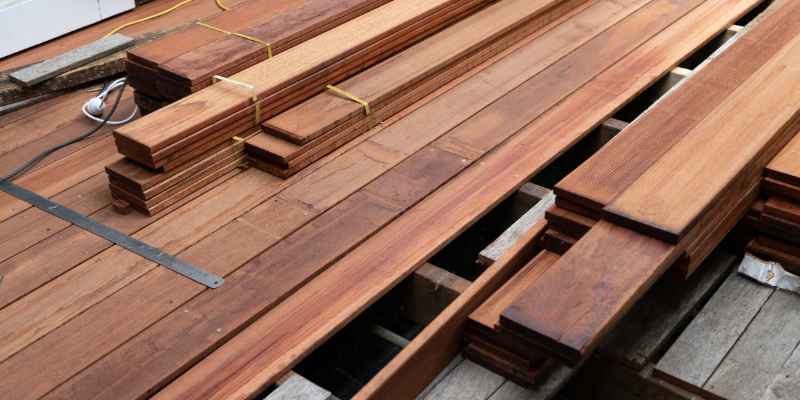
Identifying Common Issues
When inspecting your pressure-treated wood deck, be on the lookout for these common signs of wear and damage:
- Cracks and splits in the wood
- Rot or decay, especially in areas prone to moisture accumulation
- Warping or twisting of the boards
- Erosion of the wood surface
- Loose or corroded fasteners and connectors
When To Opt For Repairs Or Replacement
If you notice any of the aforementioned issues during your inspection, it’s important to address them promptly to avoid further deterioration. Small cracks or minor warping may be repairable with wood fillers or sealants, but extensive rot or structural damage may necessitate the replacement of affected boards or sections of the deck.
Advancements In Wood Treatment
Wood treated with pressure has long been a popular choice for outdoor decking due to its durability and resistance to decay, rot, and insects. Over the years, advancements in wood treatment technologies have led to longer lasting and more resilient options for decking materials. These innovations have significantly extended the lifespan of pressure treated wood, providing homeowners with a cost-effective and low-maintenance decking solution.
Innovations In Preservation
Advancements in wood preservation have revolutionized the longevity of pressure treated wood used in decking. With the introduction of innovative treatment methods, such as micronized copper azole (MCA) and alkaline copper quaternary (ACQ), the ability of pressure treated wood to withstand environmental stressors has been greatly enhanced. These treatments penetrate the wood fibers more effectively, providing a higher level of protection against decay and insect damage.
Longer Lasting Alternatives
Aside from traditional pressure treated wood, longer lasting alternatives have emerged in the market, offering enhanced durability and longevity for deck construction. These alternatives include composite decking materials, which are engineered to resist fading, staining, scratching, and mold growth. Additionally, tropical hardwoods like ipe and cumaru have gained popularity for their exceptional resistance to decay and insect infestation, providing a premium, long-lasting decking option.
Deck Design Considerations
When planning a deck, several design considerations can impact the longevity of pressure-treated wood. Understanding these factors is crucial to ensure a durable and long-lasting deck structure.
Choice Of Material For Longevity
The choice of pressure-treated wood material significantly affects the lifespan of a deck. Opt for high-quality wood species like Pine or Cedar, as they absorb treatment chemicals effectively, enhancing durability.
Structural Elements Influencing Lifespan
- Proper deck framing using pressure-treated wood is essential for structural integrity.
- Regular maintenance, such as sealing, can extend the lifespan of the deck.
- Climate conditions and exposure to elements impact how long the wood will last.
Protective Measures And Practices
Pressure treated wood on a deck can last anywhere from 15 to 30 years, depending on various factors such as maintenance, climate, and exposure to elements. Proper protective measures, such as regular cleaning and sealing, can significantly extend the lifespan of the wood.
Best Practices For Wood Protection
Protecting pressure-treated wood on your deck is crucial for longevity. Consider these best practices:
- Regularly inspect the deck for signs of wear or damage.
- Apply a high-quality sealant or stain to protect against moisture.
- Clean the deck regularly to prevent mold and mildew buildup.
- Avoid using harsh chemicals that can damage the wood.
Seasonal Care And Preventative Actions
Taking seasonal care and preventative actions can extend the life of your pressure-treated wood deck:
- Remove debris and leaves from the deck regularly.
- Reapply sealant or stain as needed, especially before winter.
- Avoid placing heavy furniture directly on the deck to prevent indentations.
- Consider using protective pads under grills and other heavy items.
End Of Life Cycle
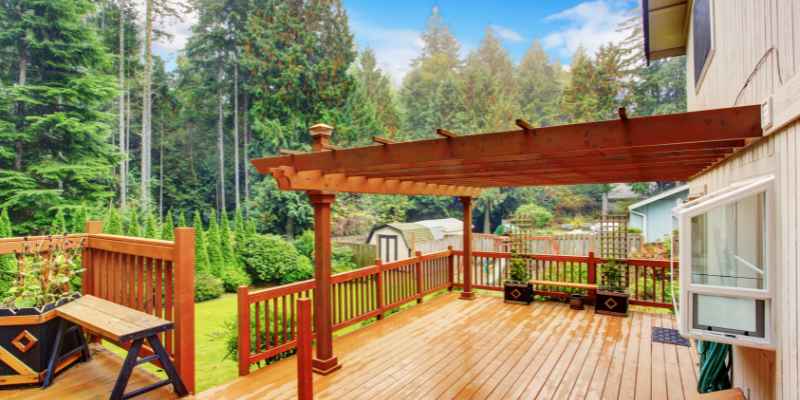
Recycling And Disposal Options
When your pressure-treated wood deck reaches the end of its life cycle, consider recycling or proper disposal methods.
Eco-friendly Decommissioning
Ensure eco-friendly practices are followed during the decommissioning of your deck to minimize environmental impact.
Frequently Asked Questions
How Long Should Pressure-treated Deck Boards Last?
Pressure-treated deck boards can last up to 40 years if properly maintained. The longevity of the boards also depends on the type of wood used, with pine and cedar being the most commonly used and long-lasting options. However, the lifespan can be shorter if the deck is not regularly cleaned and sealed.
What Is The Longest Lasting Pressure-treated Wood?
The longest lasting pressure-treated wood depends on the wood species used. Pine or cedar are among the best wood species for deck framing and can last longer when used in appropriate applications. However, the lifespan also depends on the environment and maintenance of the deck.
Can A Wood Deck Last 30 Years?
A wood deck can last 30 years if properly maintained and treated regularly.
How Often Do You Need To Seal Pressure-treated Wood?
You should seal pressure-treated wood every 1-3 years for optimal protection and longevity.
Conclusion
Pressure treated wood can be a durable and long-lasting option for decking. The lifespan of pressure treated wood on a deck can vary depending on factors such as maintenance, climate, and usage. However, with proper care and regular maintenance, pressure treated wood decks can last for many years.
It is important to regularly clean, seal, and protect the wood to ensure its longevity. By following these steps, you can enjoy your pressure treated wood deck for a long time to come.



